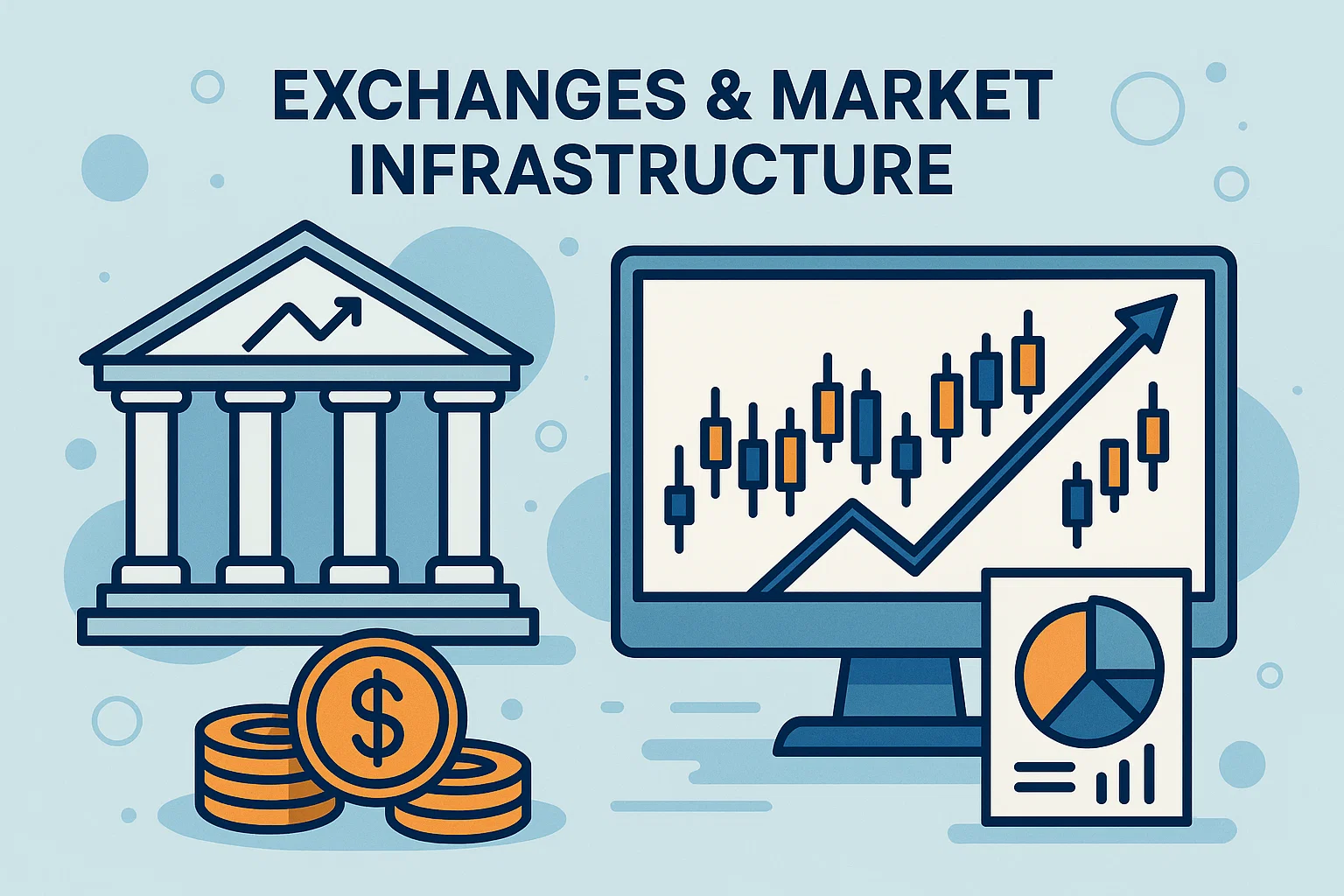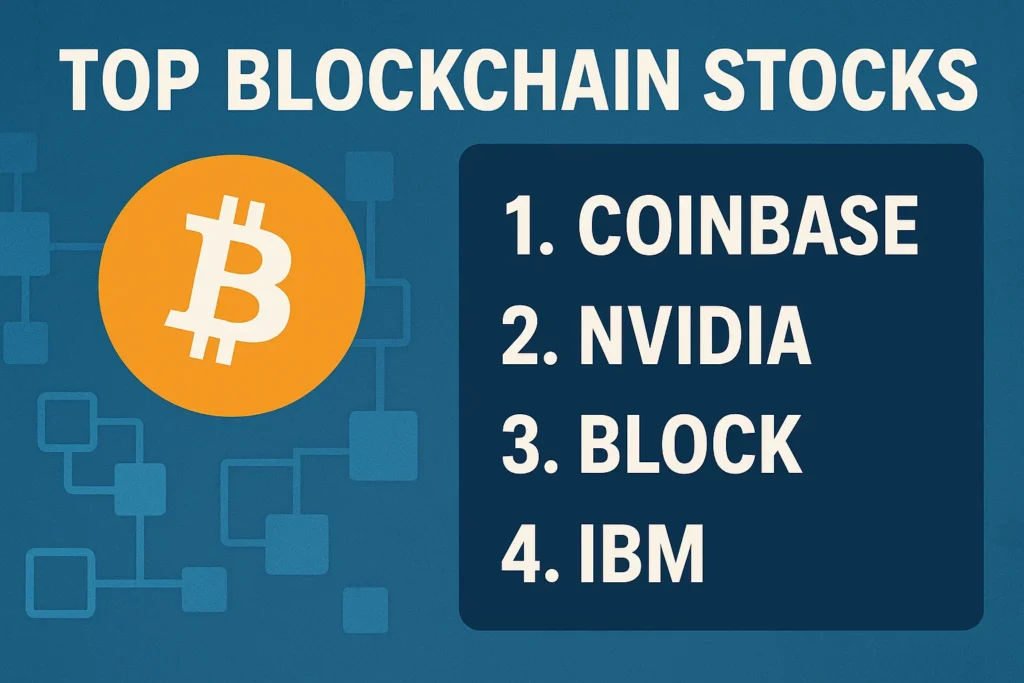The blockchain technology landscape moves fast, and so do the equities tied to it. On October 13, investors are surveying a market reshaped by rising digital asset prices, evolving regulation, and stronger fundamentals across miners, exchanges, and payment networks. While cryptocurrencies themselves can be volatile, select blockchain stocks give diversified exposure to the rails, tools, and business models powering Web3, stablecoins, and Bitcoin.
This in-depth guide highlights leading names across the ecosystem—why they matter now, what’s new in 2025, and how each company sits in the broader thematic mosaic of decentralized finance (DeFi), tokenization, and on-chain payments. Before we dive in, a quick note: this is educational analysis, not financial advice. Always do your own research and consider your risk tolerance.
Why blockchain stocks are back in focus
When crypto prices rise, the entire stack tends to benefit. Exchanges see higher trading volumes and custody revenues; miners capture higher margins on each Bitcoin produced; payment firms with stablecoin initiatives find more merchant interest; and enterprise vendors gain traction, bringing distributed ledger capabilities to supply chains and data-sharing networks. In 2025, that dynamic has returned with a vengeance. S&P Dow Jones even launched a hybrid index blending digital tokens and crypto-related equities—an acknowledgement that investors now want a single lens on the asset class and its picks-and-shovels providers. The new S&P Digital Markets 50 caps each constituent at 5% and includes both cryptocurrencies and blockchain stocks, signaling mainstream demand for diversified exposure.
At the same time, U.S. policymaking has sharpened. A Senate-passed framework for U.S. dollar stablecoins—requiring reserves, audits, and AML controls—has buoyed sentiment around compliant, real-world payments on crypto rails, and major commerce platforms are already piloting integrations. That backdrop has been particularly supportive for leading U.S. exchange and infrastructure names.
How to read this list
Below, we profile companies by role—exchanges, miners, payments/fintech, and enterprise infrastructure—so you can connect business drivers to stock narratives. For each, we summarize recent developments, the core thesis, and what to watch next. The goal is to keep keyword usage natural while weaving in relevant LSI phrases like Bitcoin miners, hash rate, on-chain payments, tokenization, custody, and digital asset infrastructure so you get a readable, human-first overview that also meets SEO best practices.
Exchanges & Market Infrastructure

Coinbase Global (COIN): Liquidity, custody, and on-chain rails at scale
Among cryptocurrency stocks, Coinbase sits at the center of the U.S. market structure. In 2025, the company will have paired core exchange revenues with staking, custody for institutions, and a growing on-chain economy via Base, its Layer-2 network. Investor sentiment has been supported by product news (stablecoin payment tooling) and a clearer path on U.S. regulation, factors that helped drive a notable rally into early Q3 and fall. Coinbase has also scheduled Q3 2025 results for late October, a near-term catalyst that typically concentrates attention on volumes, take rates, and custodial assets.
What’s especially interesting for October: Coinbase’s strategy to expand stablecoin payments and to deepen Base’s ecosystem, including cross-chain connectivity and potential new monetization paths. These initiatives position COIN not just as a trading venue but as a gateway to Web3 services, potentially smoothing earnings cyclicality as on-chain activity scales.
Bitcoin miners & data-center operators
Strictly speaking, MicroStrategy is an enterprise software company—but markets treat it as a leveraged proxy on Bitcoin. Its corporate strategy of accumulating BTC has made it the largest public holder of the asset, and 2025’s run-up supercharged the mark-to-market value of those holdings. Recent tallies show well over 600,000 BTC on the balance sheet heading into October, with the stock tracking crypto momentum.
The company’s stance remains unabashedly long-term, anchoring a thesis that blends digital asset scarcity with corporates adopting Bitcoin as a strategic reserve. Because MSTR’s operating business is smaller relative to its BTC position, the stock’s risk/return mirrors Bitcoin’s path more than most blockchain stocks. For investors wanting high beta to BTC without holding the token, MSTR remains a watchlist staple.
What to watch next
Any fresh purchase announcements, changes to leverage, and accounting/tax updates that affect BTC-holding corporates. Marathon Digital (MARA): Scale miner with growing treasury
Marathon has emerged as one of the largest U.S. Bitcoin miners, steadily increasing both hash rate and BTC holdings through 2025. Its September operational update showed production gains month-over-month and a treasury that topped 52,000 BTC—a figure that underscores its scale alongside network share and energy strategy. These monthly snapshots give investors a transparent view into efficiency, uptime, and post-halving economics.
With Bitcoin prices elevated, every incremental improvement in energy cost or fleet efficiency can expand margins. Marathon’s updates—blocks won, BTC produced, and HODL balance—are therefore key trackers for October. Riot Platforms (RIOT): Capacity, costs, and optionality
Riot pairs industrial-scale mining with data-center development, giving it flexibility as demand for high-density compute grows. Its early-October report outlined September production and operational metrics, keeping the market current on hash rate deployment, energy strategy, and site expansions. Analysts have also highlighted momentum tied to Bitcoin strength and potential AI adjacency—a reminder that well-located power and cooling can be valuable across compute-intensive workloads.
For October, investors will parse Riot’s energy credits, cost per BTC, and any updates on capacity expansions that might bring step-function improvements to output.
Bitdeer Technologies Group (BTDR): Efficiency push with proprietary rigs
Bitdeer is notable for its vertical integration, including proprietary SEALMINER hardware aimed at better joules-per-terahash. In September, the company announced a 35% jump in self-mining hash rate to 30 EH/s on continued SEALMINER deployments—an efficiency narrative that matters greatly post-halving. Better efficiency can cushion revenue swings when network difficulty rises or BTC prices cool.
The watch items here: sustained EH/s gains, fleet mix between proprietary and third-party rigs, and power costs across global sites.
Core Scientific (CORZ): Mining plus high-density colocation
Core Scientific straddles two lanes—self-mining and digital infrastructure services. Earlier 2025 updates detailed both its own production and hosting for customer-owned miners, a model that can stabilize cash flow across cycles. The company has also been active on the data-center expansion front, including announcements tied to high-density compute. For October watchers, the blend of mining economics and colocation utilization remains central to the thesis.
Payments and fintech rails
Block, Inc. (SQ): Cash App, Square, and Bitcoin-adjacent flywheels
Block’s multi-segment model—merchant services via Square and consumer finance via Cash App—gives it a unique angle on on-chain payments and Bitcoin flows. Despite quarter-to-quarter variability in Bitcoin revenue, recent results showed substantial profitability improvements, with net income and gross profit rising year-over-year in Q2 2025. That resilience matters because it funds product expansion while keeping optionality for crypto features (like Lightning support or deeper stablecoin integrations) without hinging the thesis on BTC alone.
Heading into October, the focal points are operating leverage, Cash App engagement, and how management frames the roadmap for digital asset features inside mainstream payments tools.
PayPal (PYPL): PYUSD pushes stablecoin into everyday commerce
PayPal’s PYUSD stablecoin launched in 2023 and has continued to expand its footprint in 2025, including plans to go multi-chain via Stellar—pending NYDFS approval—and broader merchant use. A recent adoption report pegged PYUSD’s market cap above the $1 billion mark with meaningful volume growth, reflecting rising comfort with stablecoins as a payment medium. For investors, the angle is simple: bringing blockchain’s instant settlement and 24/7 rails to a massive installed base of consumers and merchants.
In October, watch for regulatory milestones, new merchant integrations, and wallet partnerships that can lift real-world usage beyond trading venues.
Enterprise & infrastructure software
IBM: Practical blockchain for supply chains and data sharing
While the speculative side of crypto grabs headlines, enterprise blockchain keeps grinding forward. IBM continues to support production deployments in supply chains and logistics where multi-party data sharing, provenance, and auditability matter. Use cases include ports, retail supplier networks, and dispute resolution—spaces where permissioned ledgers can deliver traceability and operational savings. For investors, IBM’s relevance is that it monetizes distributed ledger tech through services and solutions rather than token exposure, providing diversification within a blockchain stocks basket.
Macro drivers to monitor this quarter
Regulation: Stablecoin clarity and institutional adoption
The Senate’s passage of a stablecoin framework (the GENIUS Act) in mid-2025 was a psychological turning point. Mandates for reserves, audits, and AML alignment are exactly what large merchants and banks want to see before scaling on-chain payments. If the House follows with compatible legislation, compliance-ready rails could accelerate. That favors exchanges with regulated custody, fintechs with existing merchant pipes, and enterprises ready to plug tokenized dollars into workflows.
Indexation & diversified access
The debut of S&P’s mixed crypto + equity index is about lowering friction. By capping positions and including blockchain stocks alongside tokens, the index invites more institutions to participate without needing bespoke mandates for each asset class. It’s a validation that digital assets and their corporate enablers now sit in the same investable conversation.
Mining economics: Post-halving discipline
With Bitcoin’s block subsidy reduced earlier in 2024, miners that leaned into energy strategy, proprietary rigs, and scale are better positioned. That’s why monthly production releases from Marathon and Riot, and efficiency updates from Bitdeer, command outsized attention. Production per EH/s, power costs, and hash rate growth are the levers that now separate winners from operators merely riding spot prices.
Company-by-company snapshots (October 13 view)
Coinbase (COIN)
Coinbase’s core story in October is a blend of three forces: robust spot and derivatives volumes when crypto rallies; scaling institutional custody and staking; and the Base ecosystem’s steady march toward more apps and revenue channels. Confirmation of its late-October earnings date keeps the near-term news flow dense. Meanwhile, the emergence of compliant stablecoin rails through Coinbase Payments points to a long runway for on-chain commerce.
MicroStrategy (MSTR)
MSTR remains the highest-beta blockchain stock proxy for Bitcoin on U.S. exchanges. With a vast BTC treasury accrued over years, the equity’s trajectory is tethered to BTC’s price and corporate financing strategy. Recent reporting shows holdings north of 600k BTC, amplifying upside in rallies and drawdown risk in corrections.
Marathon Digital (MARA)
Marathon’s September update showed resilient production and a growing HODL balance above 52k BTC, reinforcing its status as a scale miner with transparency into monthly ops. For October watchers, throughput, fleet uptime, and cost per coin are the heartbeat metrics.
Riot Platforms (RIOT)
Riot’s September operations snapshot underscores continued execution on capacity and data-center buildout. Analysts framing optionality around AI compute reflect a broader narrative: high-density power campuses can serve multiple compute booms, with Bitcoin mining as the anchor tenant.
Bitdeer (BTDR)
With proprietary SEALMINER rigs, Bitdeer’s self-mining hash rate has jumped, sharpening its cost position. Efficiency is the name of the game post-halving; hardware edge and power procurement are Bitdeer’s levers to protect margins.
Core Scientific (CORZ)
Core Scientific’s blend of mining and high-density colocation makes it an intriguing hybrid. Earlier 2025 disclosures highlighted hosted fleet support and expansion plans with enterprise compute partners—useful ballast when mining economics chop around.
Block (SQ)
Block’s strong Q2 2025 performance demonstrated operating leverage across Cash App and Square. As Bitcoin cycles come and go, product breadth and ecosystem effects help stabilize the story. Any incremental on-chain payments or stablecoin features could be additive in 2025–2026.
PayPal (PYPL)
PYUSD is PayPal’s wedge into compliant stablecoin commerce. Multi-chain expansion plans and growing market cap support a thesis that everyday payments can leverage blockchain’s instant settlement without forcing users to think about wallets or gas. That consumer abstraction layer is where PayPal shines.
IBM
IBM’s blockchain work in supply chains and logistics shows how permissioned ledgers deliver ROI through transparency and dispute reduction. It’s the lower-beta, enterprise-grade counterweight in a basket of blockchain stocks heavy on crypto price sensitivity.
Risks and reality checks
Volatility and correlation
Even diversified blockchain stocks can remain tightly correlated to Bitcoin during fast moves. High-beta names like MSTR and miners can swing more than the underlying, while exchanges can be impacted by regulatory headlines even if volumes are strong. Recognize that many of these share crypto market beta on the way up and down.
Regulation isn’t “done” yet.
The stablecoin framework clearing the Senate was a milestone, but not the final word. Implementation, supervisory guidance, and House actions still matter. Companies that are already aligned with licensure, audits, and compliance should have an edge, but policy risk persists.
Hardware and energy dynamics
For miners, the shift to more efficient rigs and better power contracts is existential. Post-halving breakevens rely on hash rate density and energy strategy. That’s why fleet refresh cycles (Bitdeer’s SEALMINER), campus expansions (Riot), and uptime (Marathon) draw scrutiny every month.
Putting it together: building a watchlist.

A balanced blockchain watchlist for October 13 might mix:
-
A liquidity/market-structure core (Coinbase) for exposure to volumes, custody, and on-chain services.
-
A high-beta treasury proxy (MicroStrategy) for directional BTC exposure.
-
One or two efficiency-minded miners (Marathon, Riot, Bitdeer, Core Scientific) to play operational upside and network share.
-
Payment rails (Block, PayPal) to capture stablecoin and instant-settlement adoption without pure price dependence.
-
An enterprise anchor (IBM) to add lower-beta distributed ledger exposure grounded in real-world supply chains.
That blend touches digital assets, Web3, Bitcoin miners, stablecoins, hash rate, custody, and enterprise blockchain technology—the LSI phrases you’ll encounter while researching—but in a way that keeps the narrative readable and not keyword-stuffy.
Read More: Best Blockchain Stocks to Buy Now, Top 10 Investment Picks 2025
Conclusion
On October 13, the investment case for blockchain stocks is less about one coin’s price and more about a maturing stack: exchanges building compliant rails, miners optimizing post-halving, payment giants normalizing stablecoin checkout, and enterprises embedding ledgers into the world’s logistics. The story is bigger than speculation—it’s about infrastructure meeting adoption. That’s why names like Coinbase, MicroStrategy, Marathon, Riot, Bitdeer, Core Scientific, Block, PayPal, and IBM are worth watching right now. They map to concrete, measurable milestones—volumes, hash rate, treasury size, merchant integrations—that you can track through earnings calls and monthly operations reports. Stay nimble, stay curious, and let fundamentals—not just headlines—guide your decisions.
Frequently asked questions
Q: Are blockchain stocks only for bullish crypto markets?
Not necessarily. While many names carry crypto beta, some—like enterprise vendors or diversified fintechs—have multi-line businesses that can perform even when token prices stall. The key is understanding revenue mix: exchanges add services like custody and on-chain payments; payments firms monetize merchant tools; and enterprise players sell solutions independent of token prices.
Q: Which metrics should I watch for Bitcoin miners?
Focus on hash rate (EH/s), BTC produced per month, cost per coin (energy + overhead), fleet efficiency (J/TH), and treasury policy (HODL vs. sell). Monthly production updates from Marathon and Riot, and efficiency disclosures from Bitdeer, are especially informative.
Q: How important are stablecoins to the investment thesis?
Very. A clear regulatory framework plus merchant adoption moves stablecoins beyond trading into everyday payments, remittances, and B2B settlement. That benefits exchanges (custody/rails), fintechs (merchant acceptance), and issuers. Recent U.S. legislative momentum and corporate deployments (e.g., PayPal’s PYUSD plans) are notable tailwinds.
Q: Is MicroStrategy just a proxy for Bitcoin?
Functionally, yes. MicroStrategy’s large BTC treasury means MSTR trades like a high-beta Bitcoin vehicle. If you want exposure to BTC’s upside without holding tokens, it’s a common pick—but the risk mirrors Bitcoin’s volatility and any financing decisions the company makes.
Q: What’s a sensible way to build a blockchain stock basket?
Blend roles: one market-structure name (Coinbase), one or two efficient miners (Marathon, Riot, Bitdeer, Core Scientific), a payments rail (Block or PayPal), and an enterprise player (IBM). That mix diversifies drivers across volumes, production efficiency, merchant adoption, and software/services. Track catalysts like earnings dates, monthly ops updates, and regulatory milestones.

















